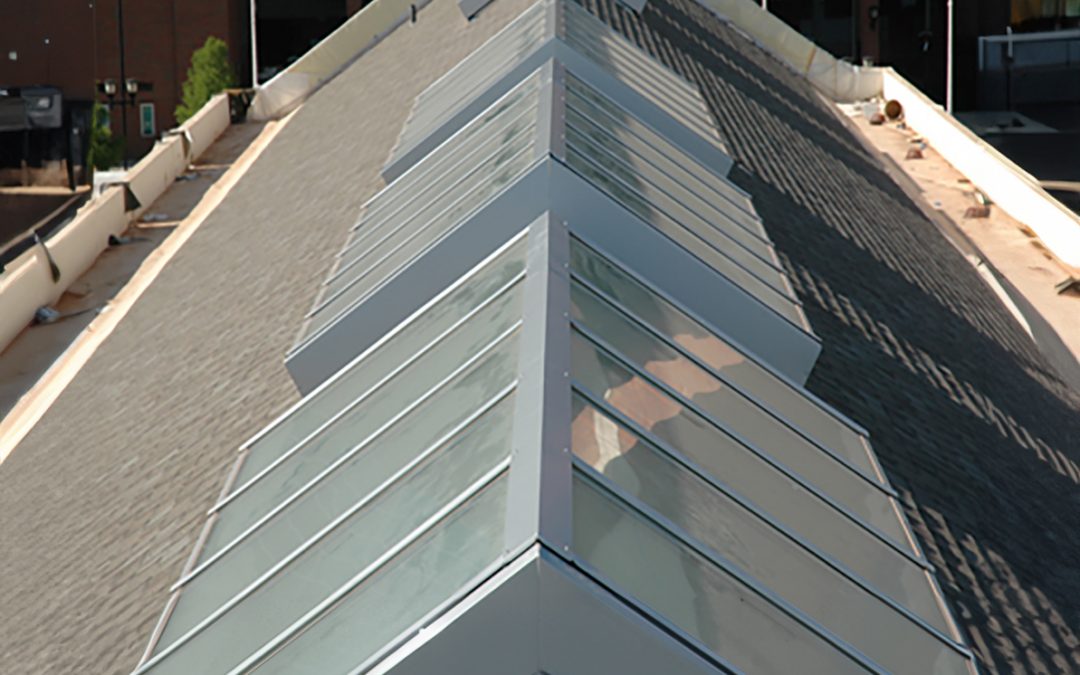Skylight Maintenance 101: Ensuring Longevity and Performance
A well-designed and properly maintained commercial skylight can typically last anywhere between 15 to 30 years or even longer.
Skylights are a popular feature in commercial buildings, adding natural light, ventilation, and aesthetic appeal. We’ve provided skylights in just about every type of structure from office spaces and schools to medical facilities and industrial operations. Like any other component of a building, commercial skylights require regular maintenance to ensure their longevity and optimal performance. Property owners and facility managers can follow this list of tips to ensure the continued aesthetic appeal and functionality of skylights in their buildings.
Clean the Skylight Regularly
Regular cleaning is crucial for maintaining the appearance and functionality of all types of skylights. Dust, dirt, debris, and pollutants can accumulate on the skylight surface, hindering the passage of natural light and reducing its efficiency. Adding a regular cleaning of skylights to property checklists will ensure maximum light transmission. Use non-abrasive cleaners and soft cloths to clean both the inside and outside of the skylight. Avoid using harsh chemicals or abrasive materials that could damage the surface. Do not use high-powered pressure washers. While cleaning, inspect and clean the weep holes (drainage holes) to prevent any blockages.
Inspect for Leaks
Proactive inspection is essential to detect and address potential leaks in skylights. Regularly check for signs of leakage, especially after heavy rainfall or snowfall. Property owners and facility managers should look for water stains, moisture accumulation, or mold growth around the skylight area. If any leaks are detected, they should be addressed promptly. This may involve resealing or replacing damaged gaskets or calling upon professional assistance for more extensive repairs.
Maintain the Sealant and Flashing
The sealant and flashing around commercial skylights play a critical role in preventing water infiltration. Inspect the sealant and flashing annually, looking for signs of cracking, peeling, or separation. Well-maintained seals and flashing will help protect skylights from water damage and maintain their performance. If any issues are identified, reapply the sealant or replace the flashing as necessary.
Check for Condensation
Condensation can occur on skylights due to temperature differences between the interior and exterior of the building. Excessive moisture can lead to water damage, mold growth, and compromised insulation. Facility managers should regularly monitor skylights for excessive condensation and take steps to improve ventilation or insulation in the affected area if needed. Adequate airflow and insulation will help minimize condensation and its associated problems.
Trim Surrounding Trees and Branches
Single-story buildings with skylights often have trees or branches in their vicinity. Landscaping should include regular trimming of these trees to prevent branches from scratching or damaging the skylight surface during inclement weather. Falling leaves, twigs, or tree sap can also accumulate on the skylight, requiring more frequent cleaning. By keeping the surrounding vegetation in check, property owners can reduce the risk of physical damage and minimize maintenance needs.
Regularly Inspect the Hardware
Skylights may feature various hardware components such as hinges, latches, and cranks that enable window openings. These components should be regularly inspected to ensure they are functioning properly. Lubricate hinges and moving parts as recommended by the manufacturer to prevent rust and corrosion. Promptly replace any damaged or worn-out hardware to maintain smooth skylight operation and security.
Seek Professional Help When Needed
While regular maintenance can prevent many issues, professional assistance may be necessary for complex skylight systems or significant problems. These professionals can assess the situation, provide expert advice, and carry out necessary repairs or replacements.
Facility managers should consult skylight specialists or professional contractors if they encounter major leaks or extensive damage, or if skylights are nearing the end of their lifespan. A well-designed and properly maintained commercial skylight can typically last anywhere between 15 to 30 years or even longer.
By following these skylight maintenance tips, property owners and facility managers can ensure the longevity and optimal performance of the skylights in their buildings. Regular skylight cleaning, inspection, and addressing issues promptly will help prevent damage, maintain visual appeal, and maximize the benefits of natural light and ventilation that skylights provide to commercial buildings.
More From This Category

The 4 Types of Ridge Skylights
Four types of ridge skylightsRidge skylights combine aesthetic appeal with functional...

Reviving a Kansas City Landmark: The Historic KC Star Building
NEW PROJECT ANNOUNCEMENT May 2023, #25405 4 Skylights CSI: 08 63 00 Architect: Generator Studio,...

Unveiling the Brilliance: Crystal Structures’ Remarkable Touch on Hotel Properties
The fusion of beauty and functionality: Crystal Structures collaborations elevate the...


